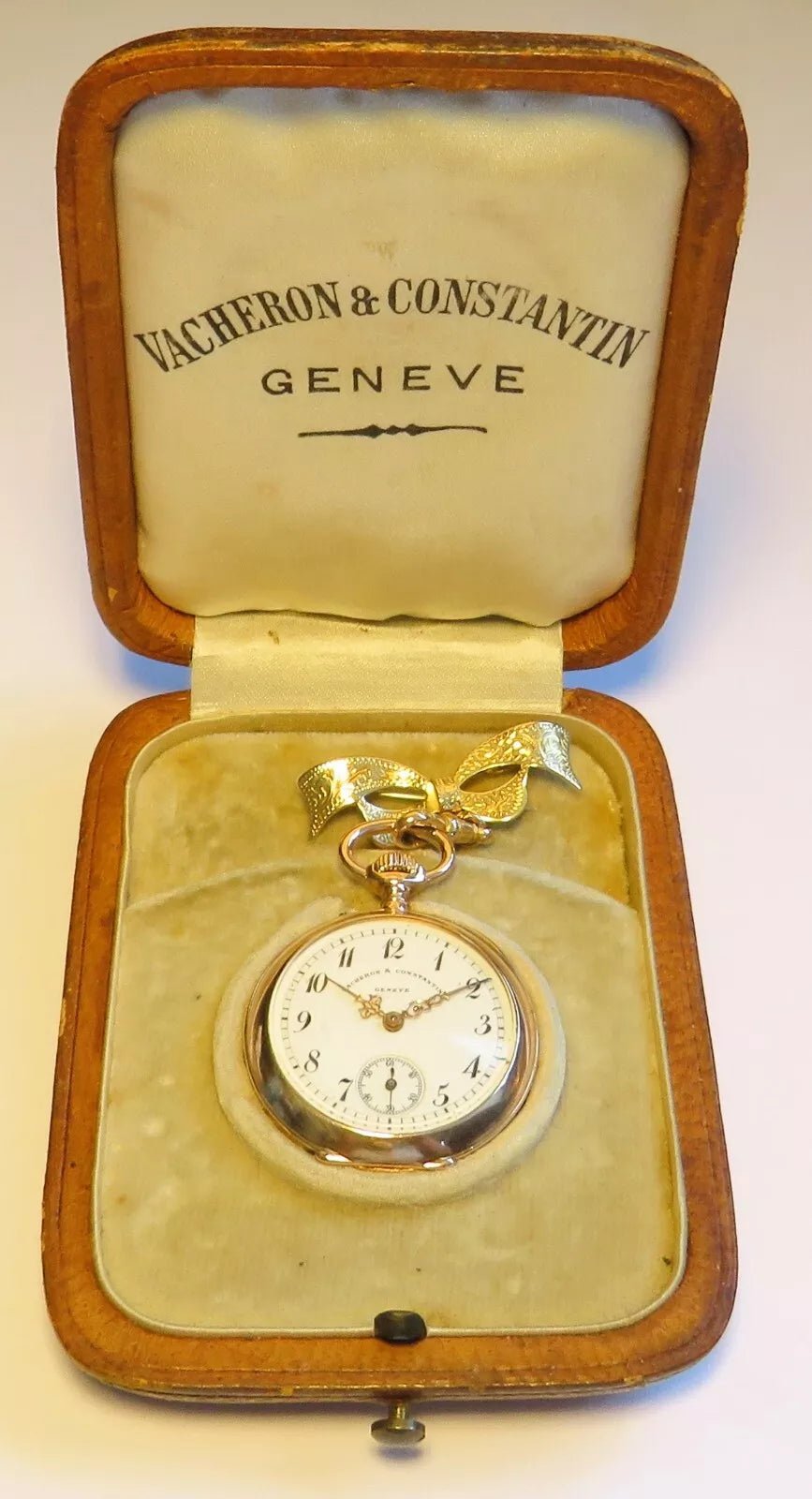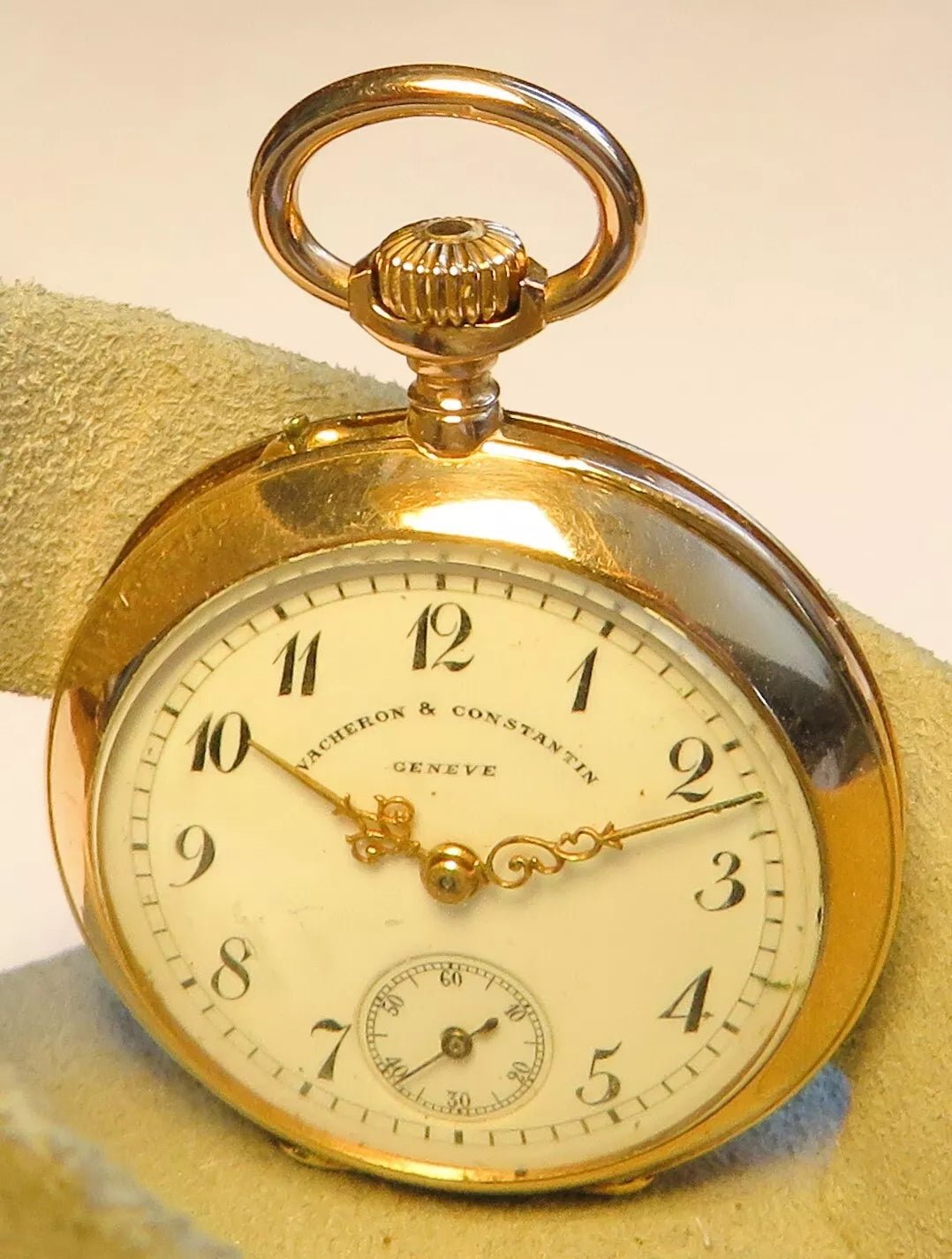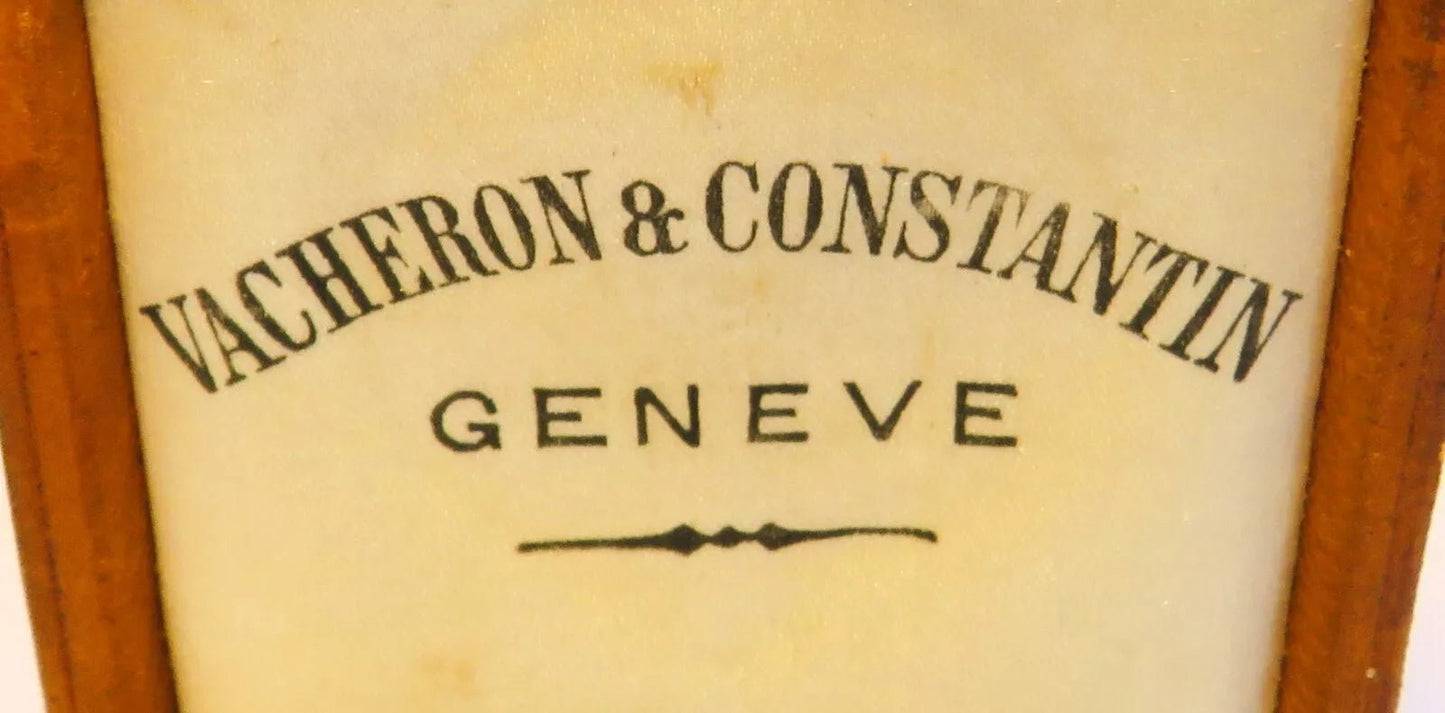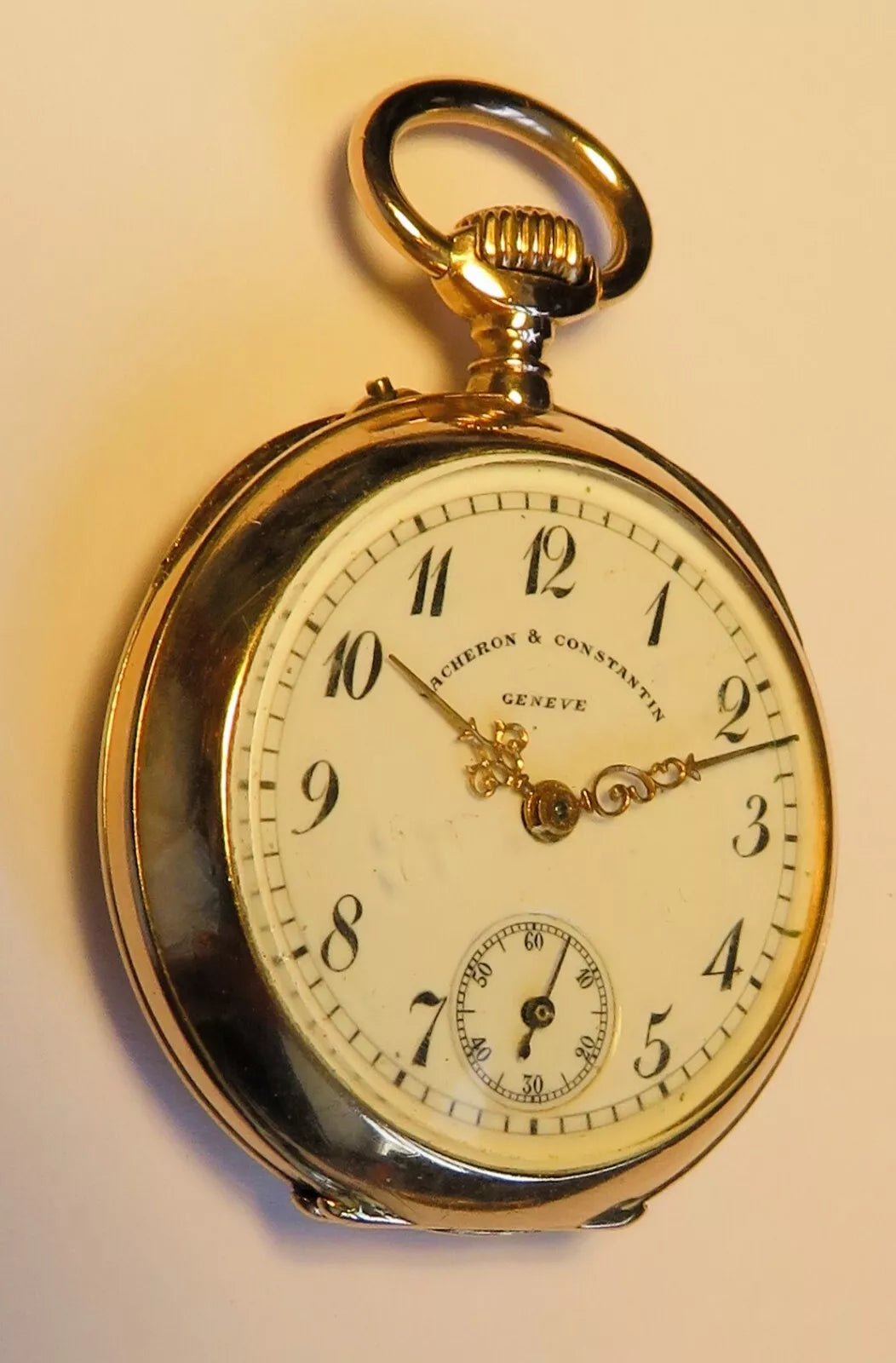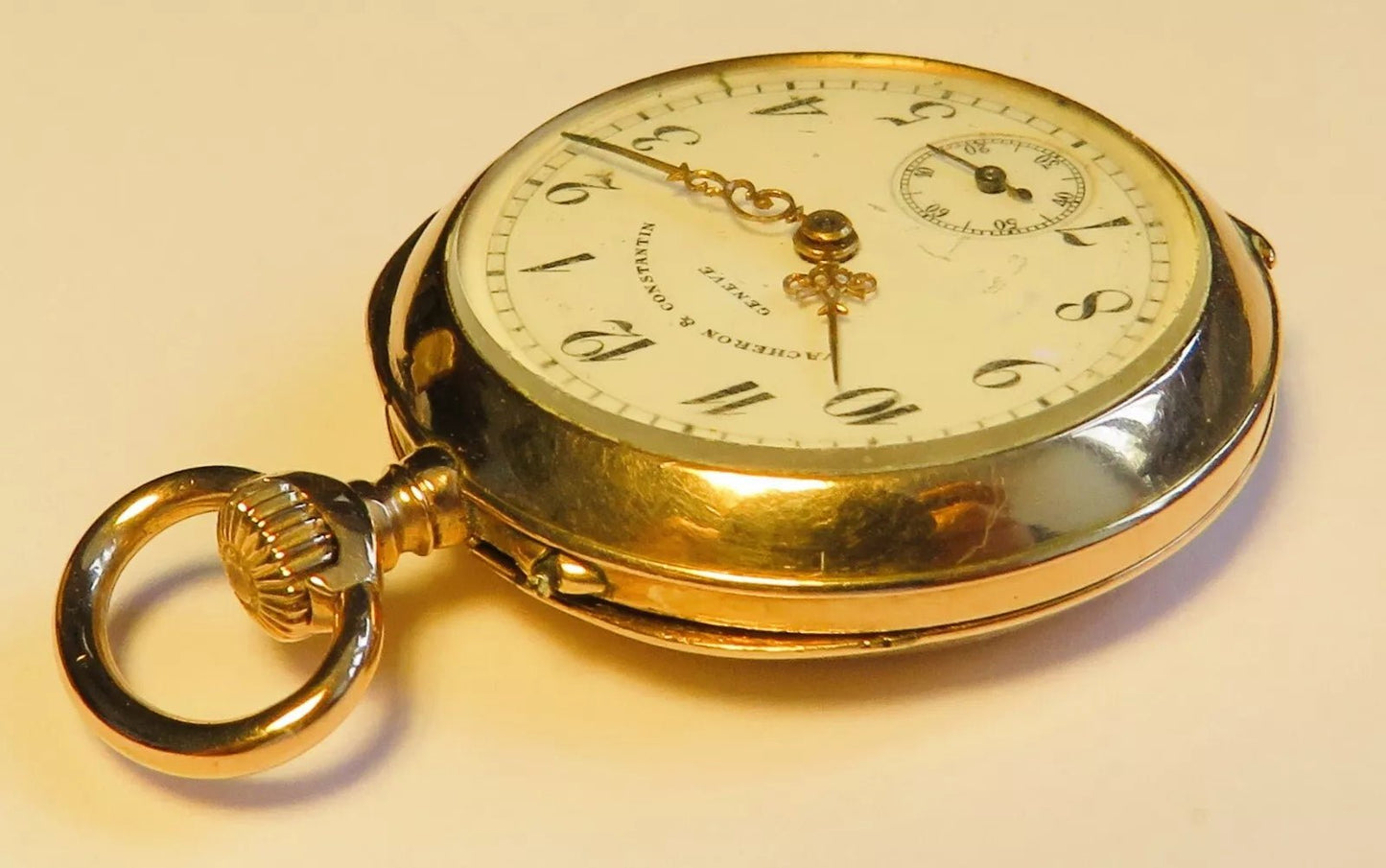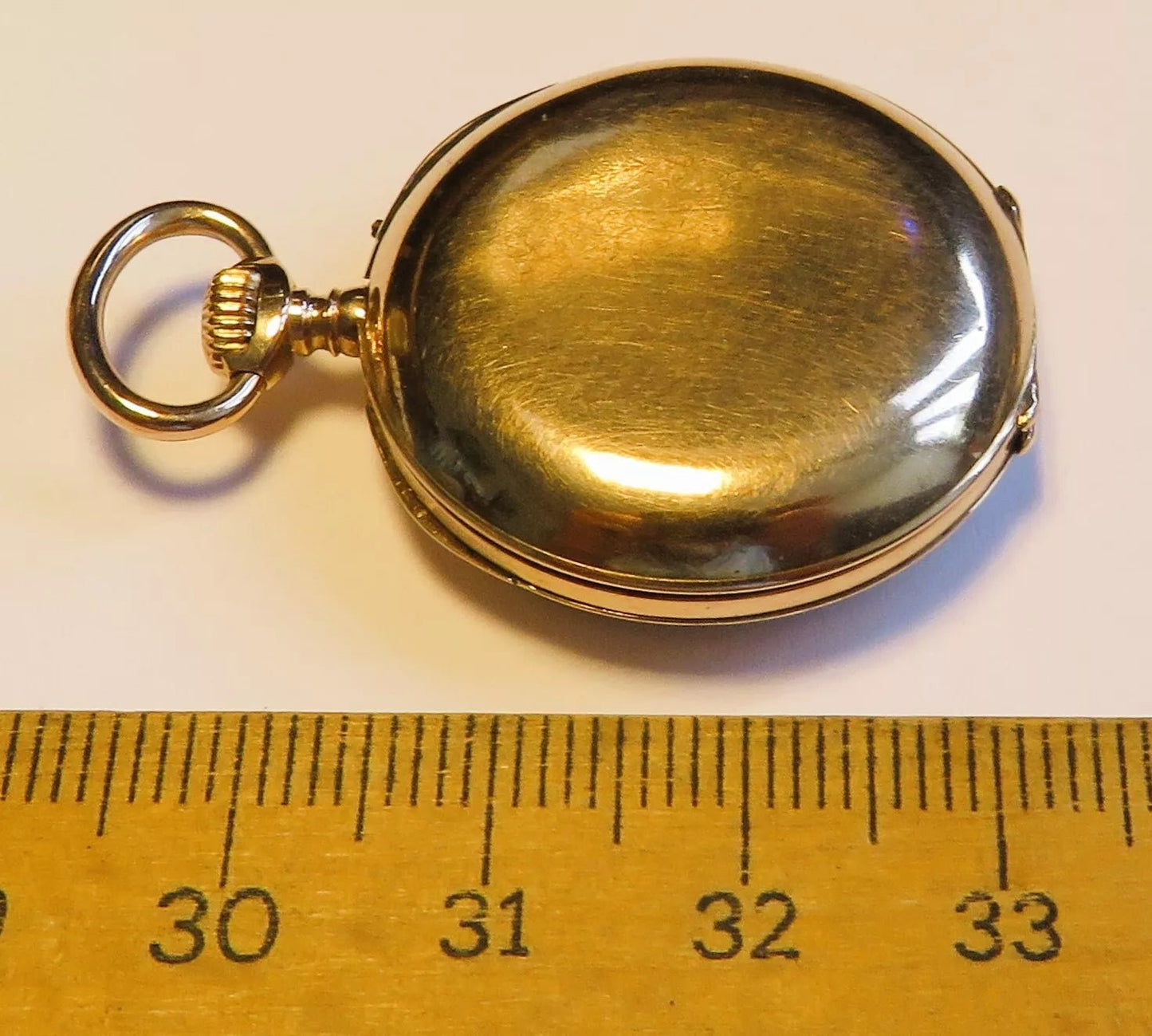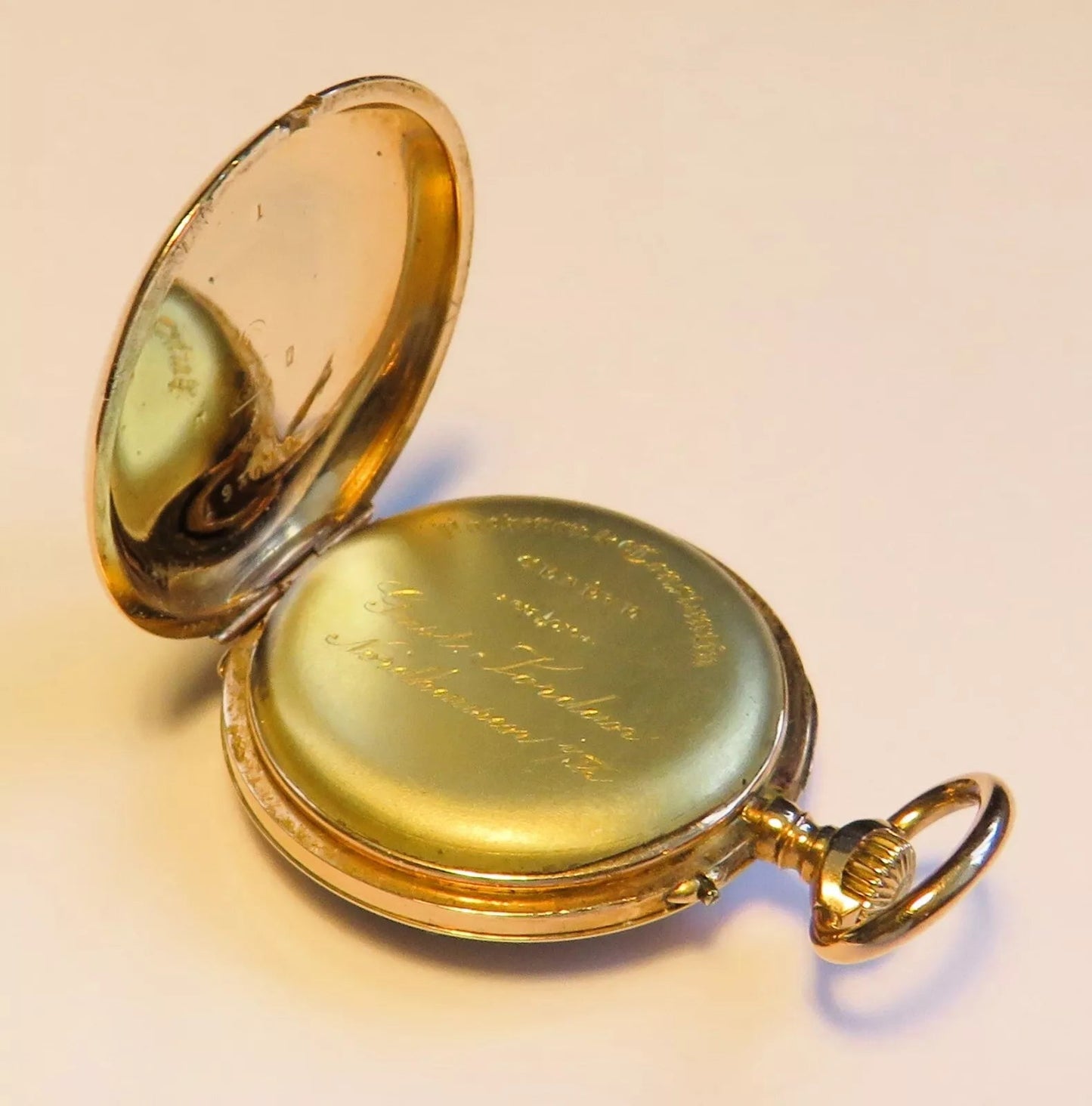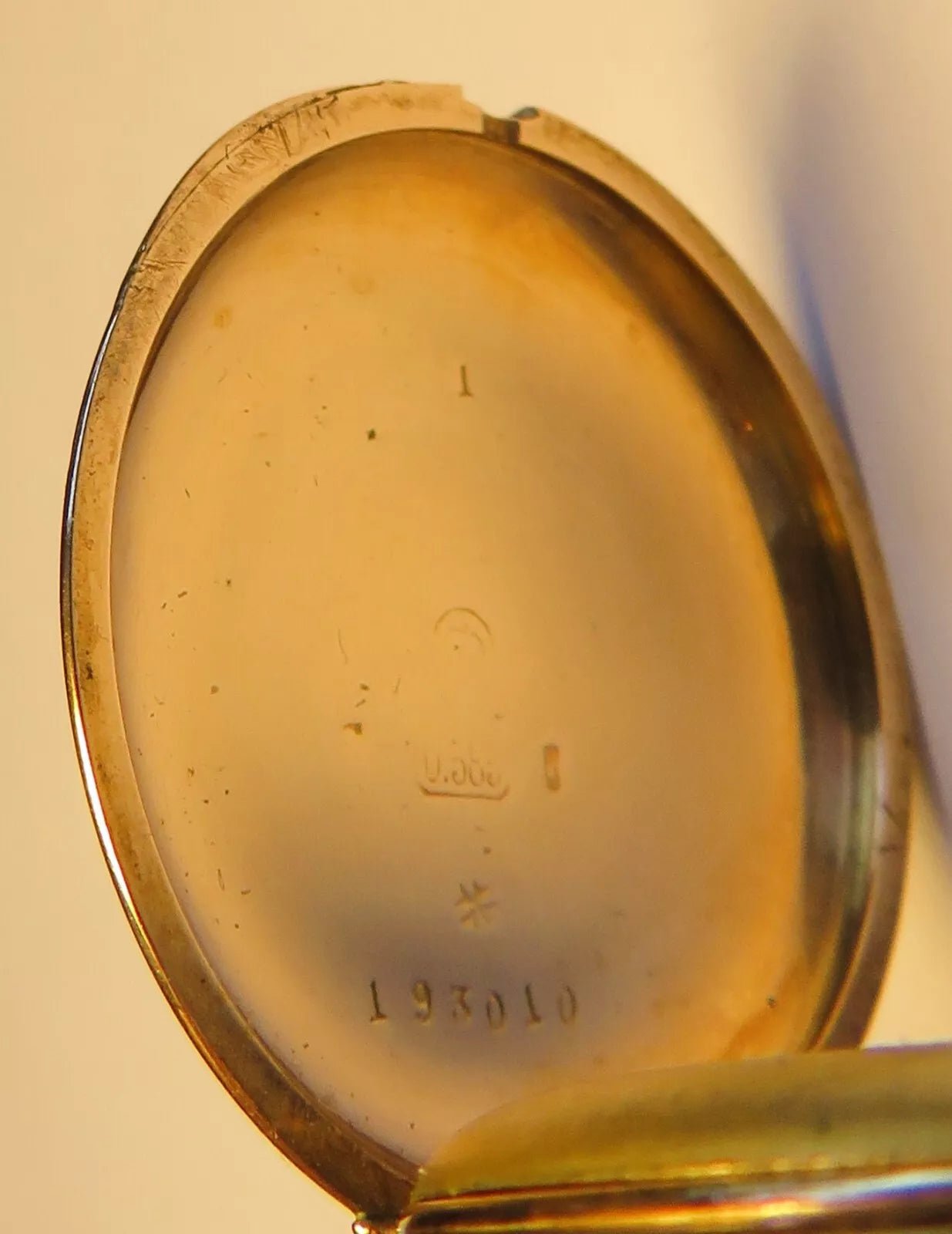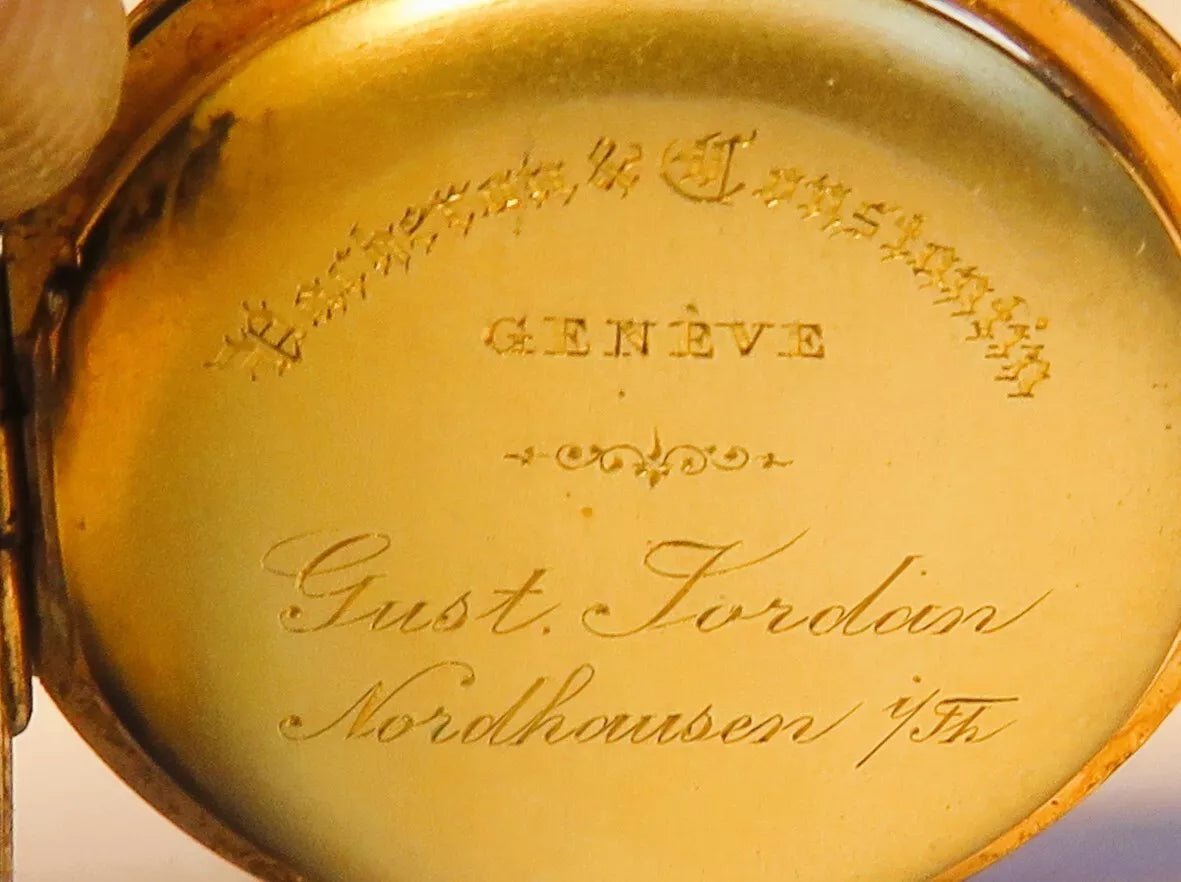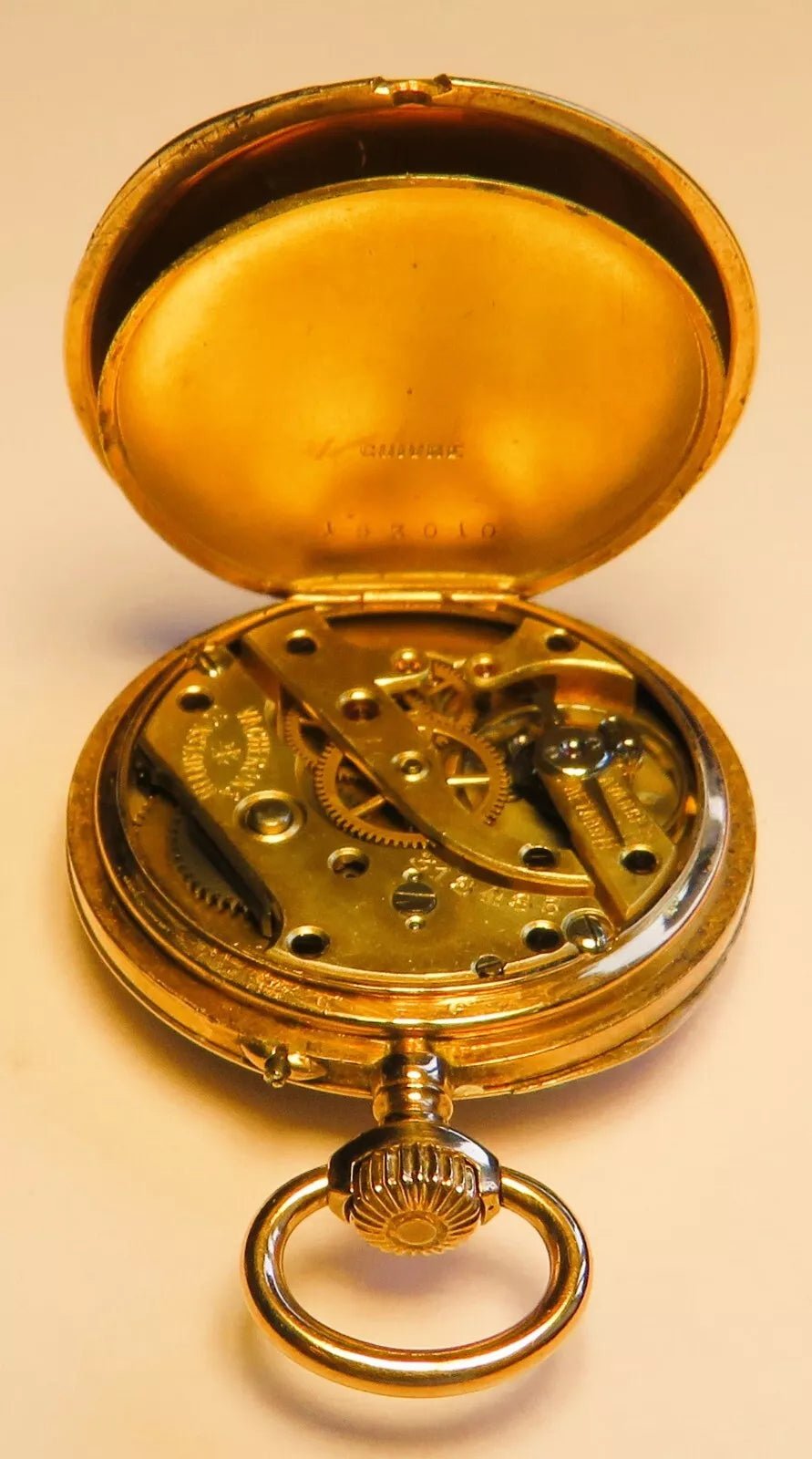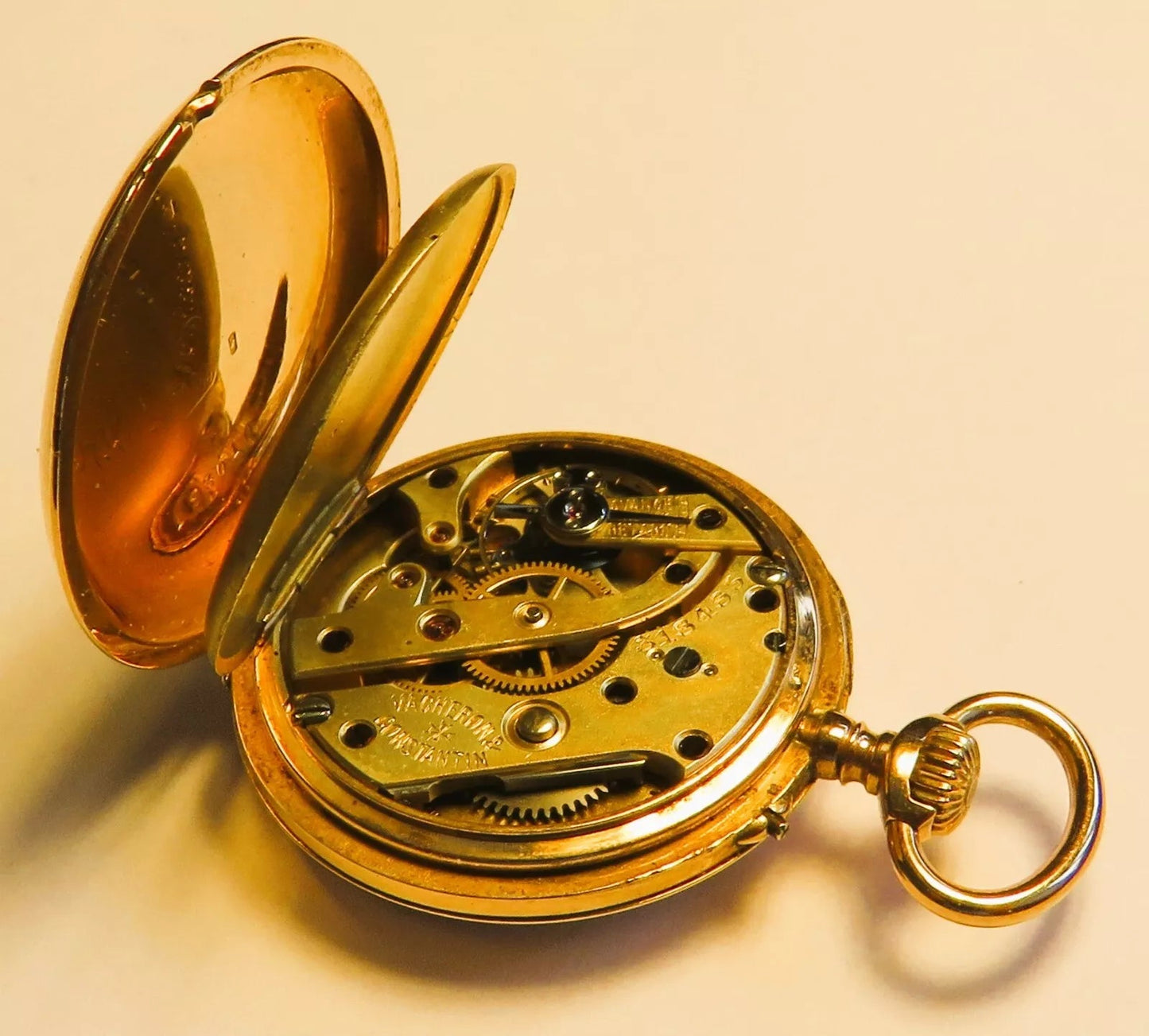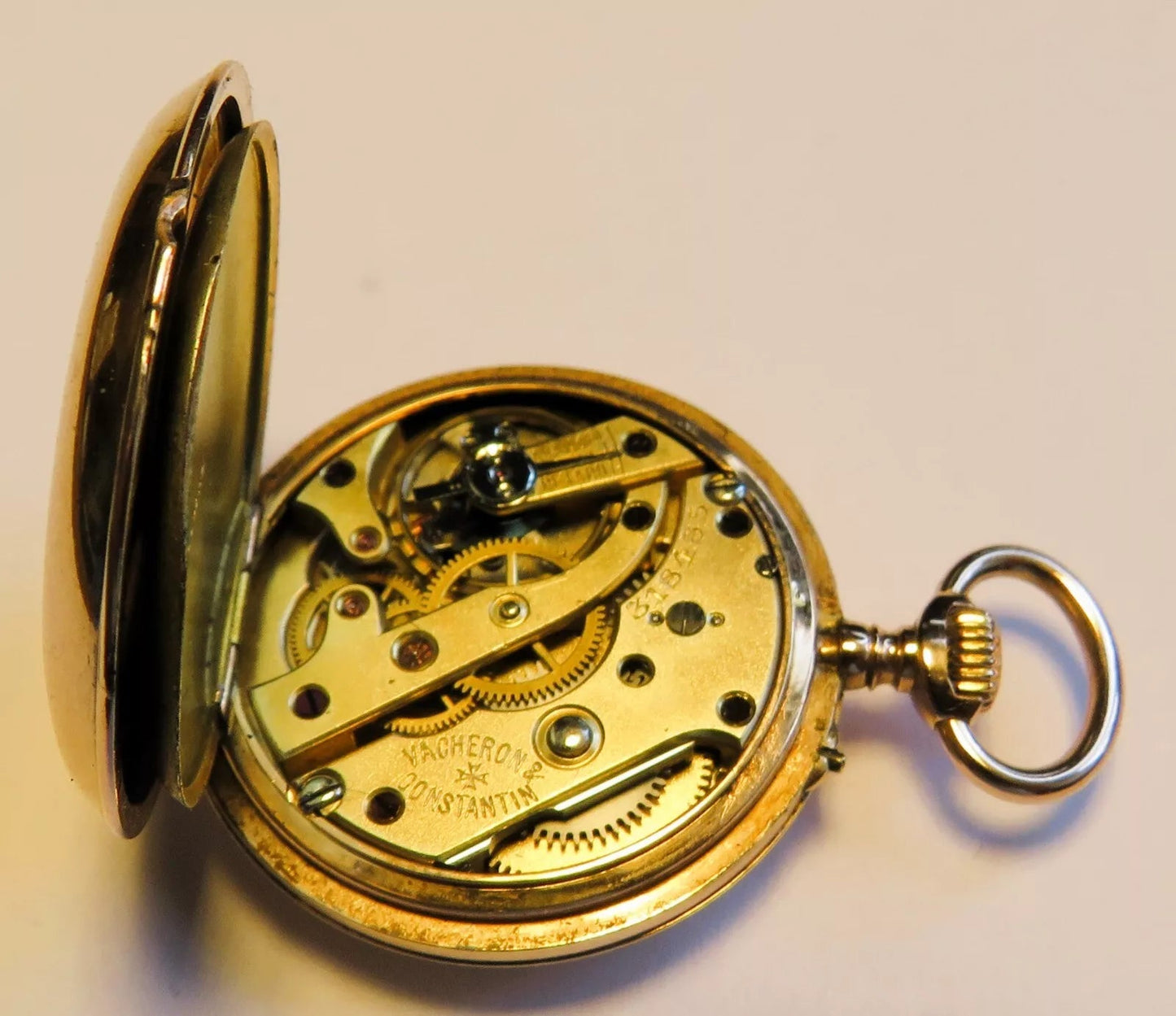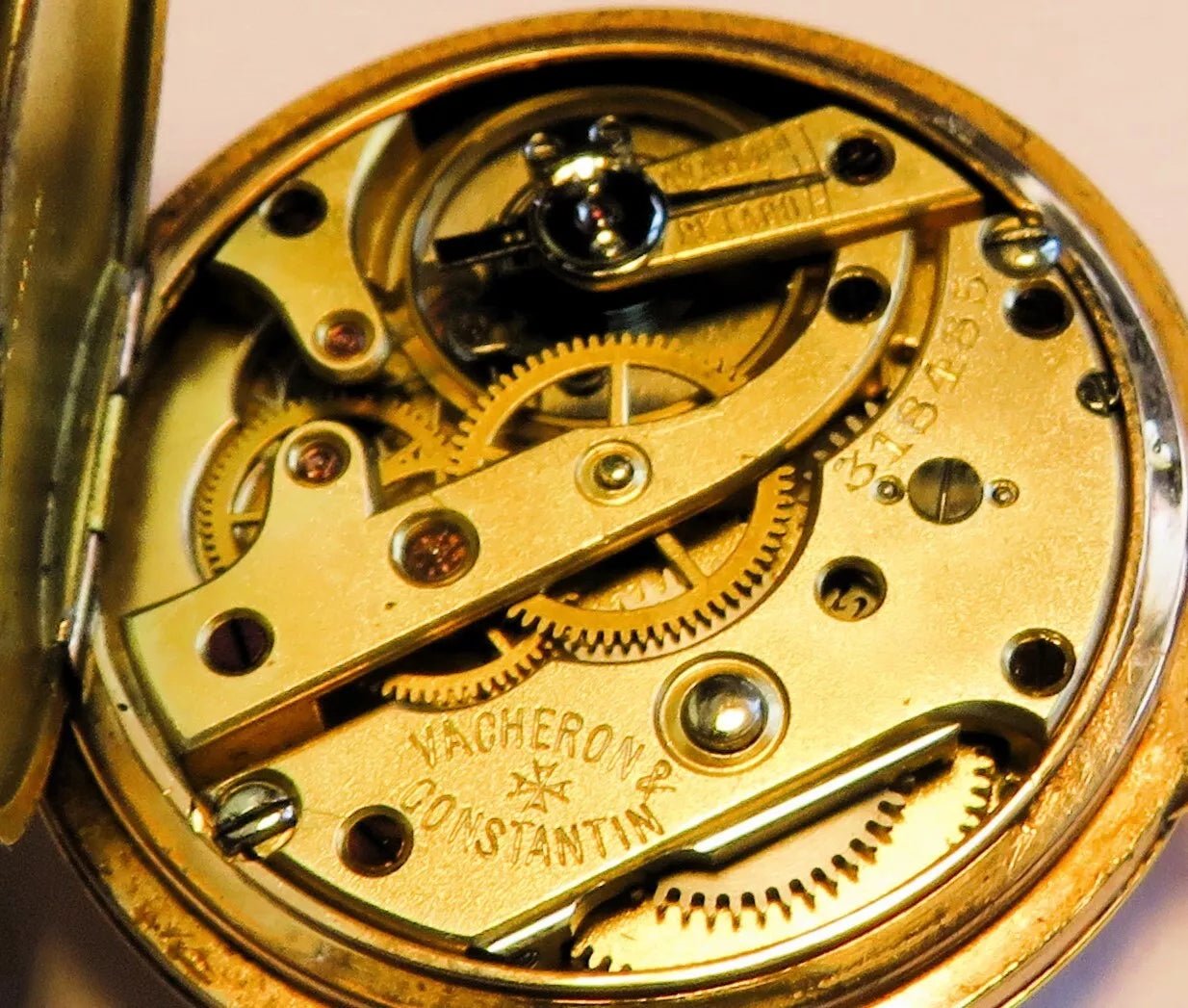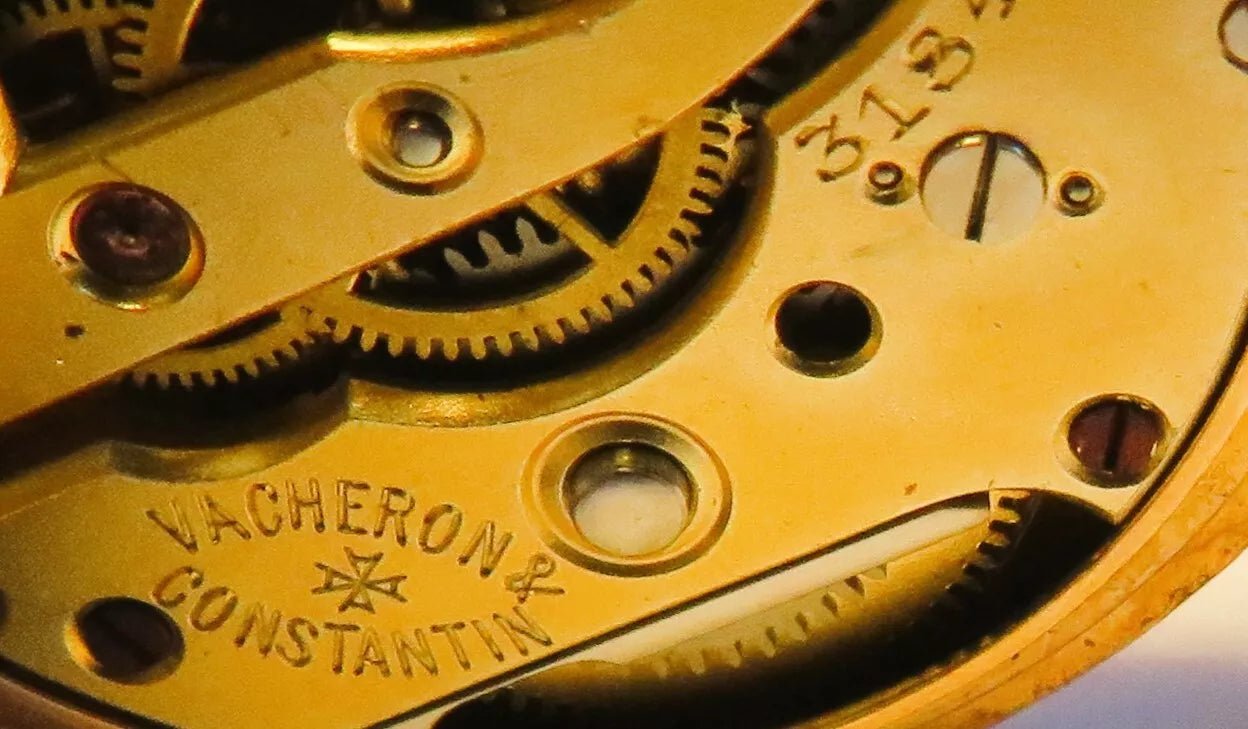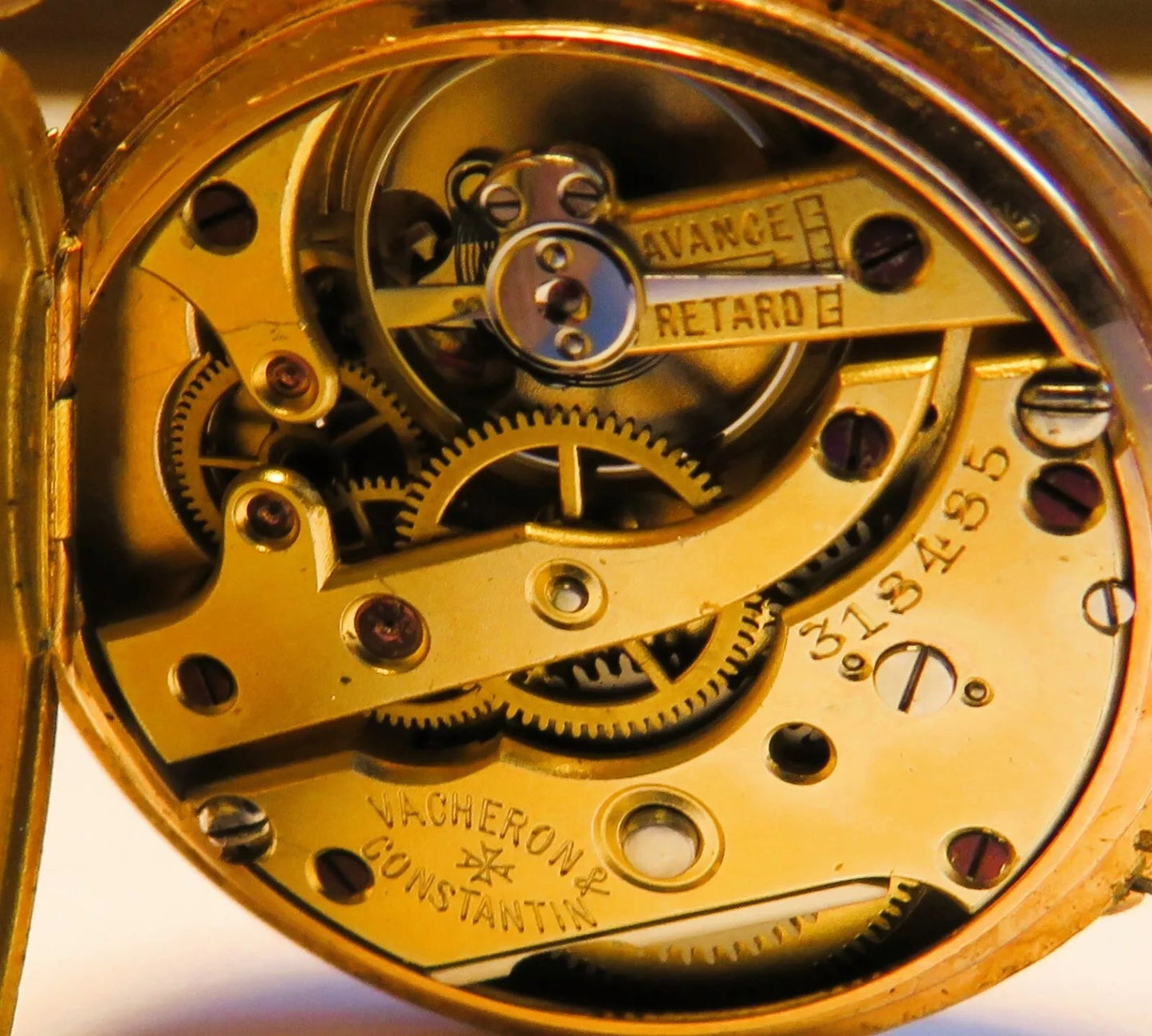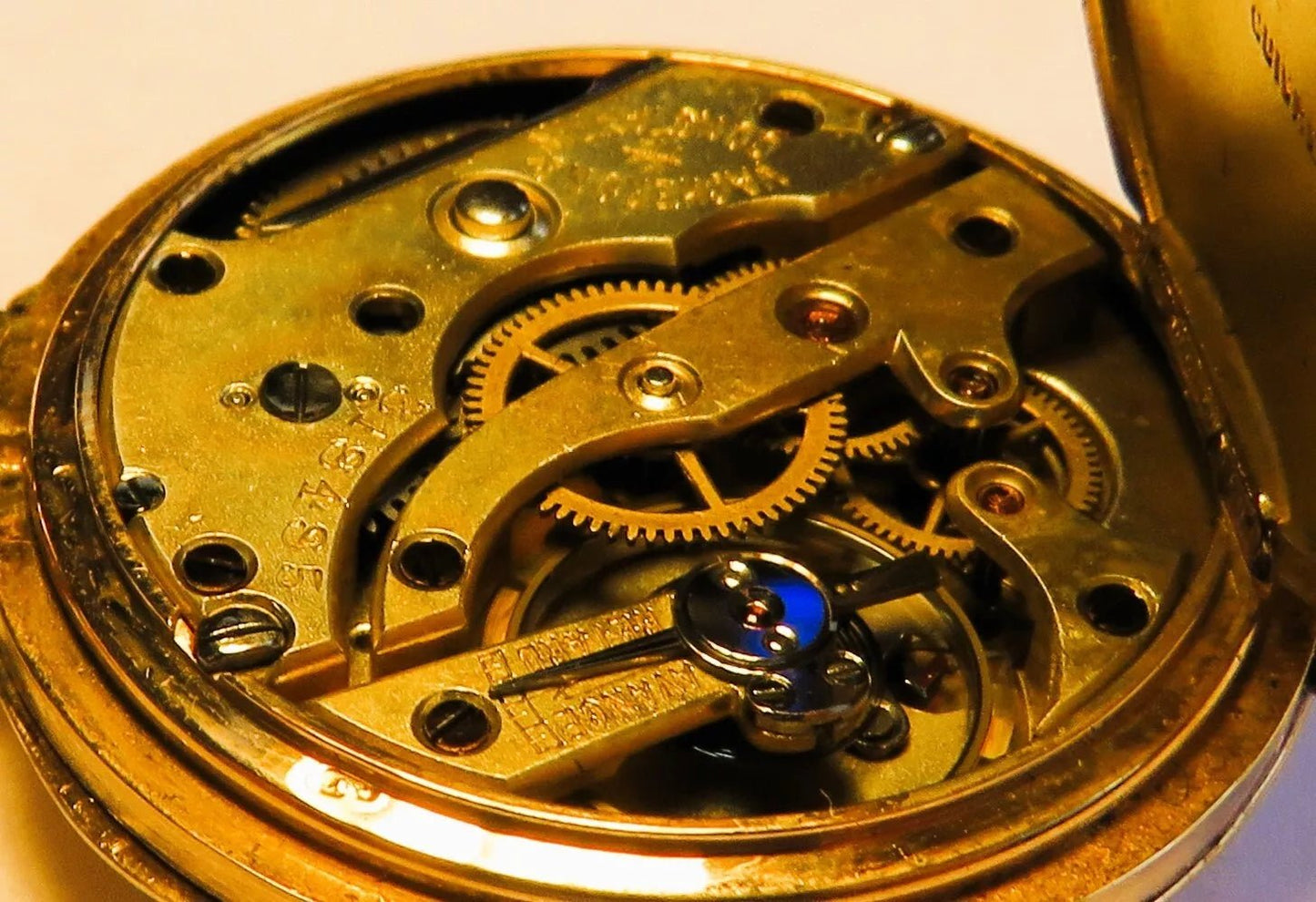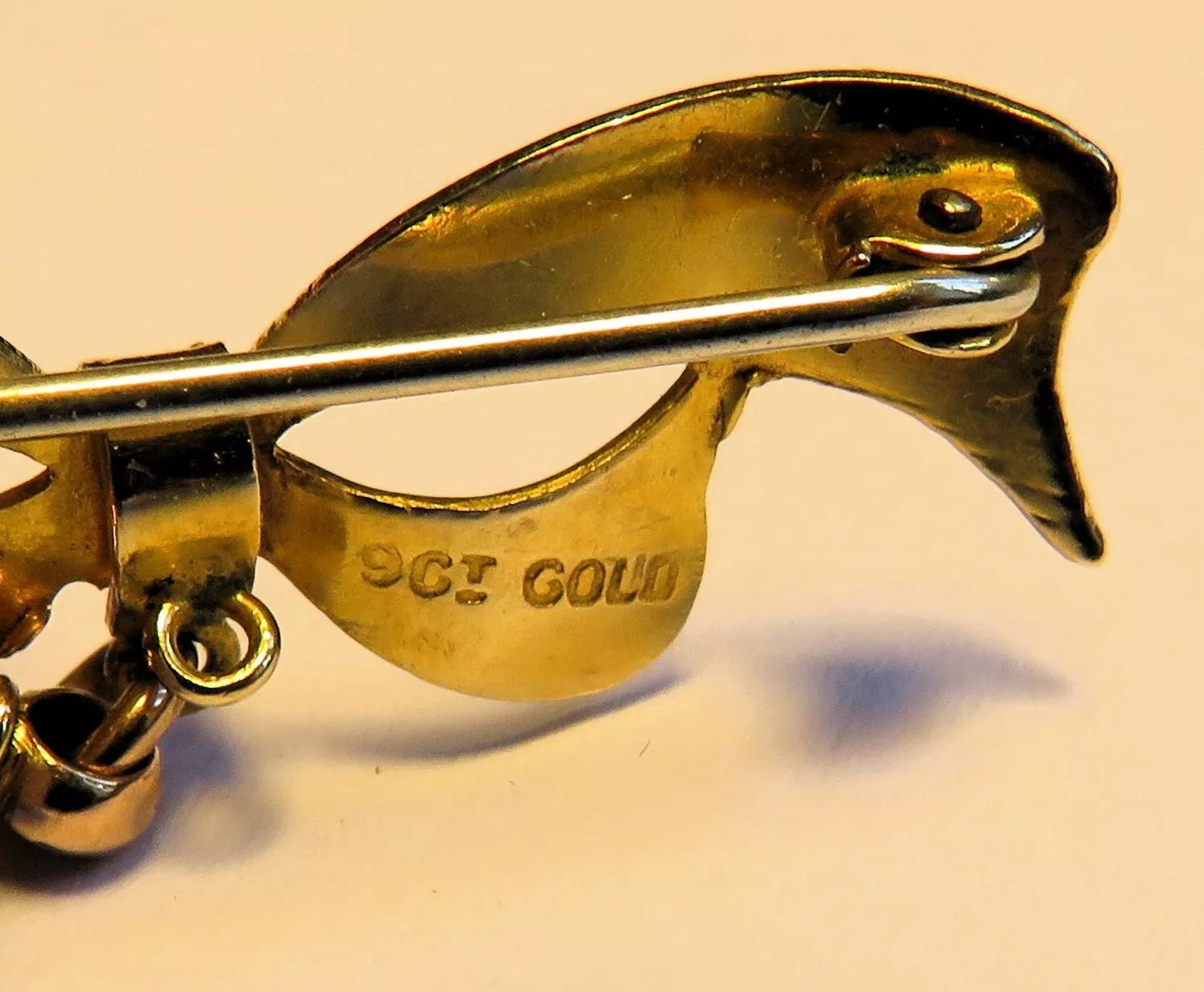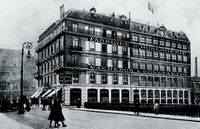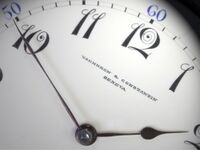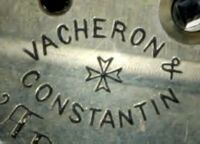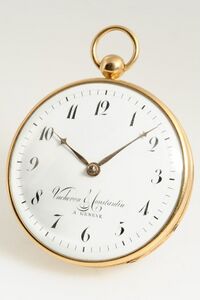1850 50000
1890 180000
1895 217000
1900 255000
1905 287000
1910 330000
1915 360,000
1920 390000
1925 398000
1930 405000
1935 427000
1940 450,000
1945 475,000
Sammler-Uhren
Vacheron Constantin solid gold 585 / 333 pocket watch in rarest original case
Vacheron Constantin solid gold 585 / 333 pocket watch in rarest original case
Couldn't load pickup availability
Vacheron Constantin Geneve is a super-rare pocket watch made of solid 585/14K gold with a 333 9K gold brooch. According to the movement number, this museum-quality piece was manufactured between 1905 and 1910 (source: Uhren Miguel):
Vacheron Constantin year of manufacture according to movement numbers:
Year: No.:
The very special thing about this offer is the original and perfectly fitting Vacheron Constantin case from the time
For those who don't like the somewhat conspicuous inner lid signature "Vacheron Constantin," please note that (pocket) watches of this era were generally not signed by the manufacturer. Such a signature was only added retrospectively, at the request of the buyer, by the manufacturer or a jeweler in a font and size chosen by the buyer, which—as it was added retrospectively—naturally matched the style and font of the original lid signatures.
Even smart alecks who mock that case numbers and movement numbers are not identical should be told that pocket watch cases of this era were generally bought in to measure and not manufactured by the manufacturer themselves (and were also numbered identically).
Case and movement numbers cannot be identical, as they were manufactured far apart, possibly not even in the same calendar year, and were only brought together for final assembly
There is no doubt about its authenticity, the museum piece is signed five times: dial, Maltese cross base, intermediate cover and last but not least movement, so it couldn't be more genuine and authentic
Description:
Ladies' pocket watch/pendant watch Vacheron Constantin, Geneva / Switzerland around 1880 with matching top-mounted brooch
Material: 14K / 585 gold (pendant brooch 9K 333 gold)
Early Remontoir hand-wound via crown. Case No. 193010. Movement No. 318485
1 gold case, inner metal movement protection cover with dedication or seller's engraving. White dial with black Arabic numerals, indirect second hand above the "6," and ornately crafted solid gold hands.
The upper bow-shaped brooch in 9 kt GG/RG, specially made for this magnificent watch, complements
Diameter: 30mm, crown bridge 43mm. Total weight: 27.4g. Included: the original, custom-made case from the period.
Sparkling clean, "vacheron Constantin" signed movement, three-lid watch, both lids close absolutely flush and firmly
This museum piece of watch history in its original packaging runs smoothly (accuracy not tested) and is in very good condition. The case and movement show hardly any signs of age or wear. The unrestored dial is also in good condition without any hairline cracks or breaks.
Spots visible on photos do not come from the dial, but are glass marks, which can be replaced for less than 20 euros if it bothers you
EZ: 2, good to best collector's condition, dial unrestored and fully signed, top! Barely discernible signs of age or wear. Winds smoothly, starts and runs continuously, accuracy not tested.
History of the Vacheron & Constantin watch manufacturer (source: Wikipedia):
Vacheron Constantin/de
Vacheron Constantin
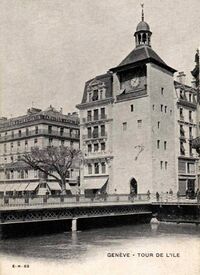
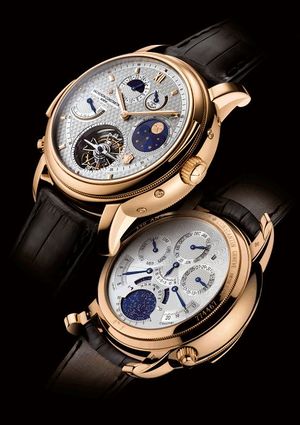
1785 His son Abraham took over the then still small company, but the French Revolution put an abrupt end to the export business, and so Abraham Vacheron faced numerous problems. He married and, in keeping with tradition, added his wife's surname to his name, thus changing the name of the manufacture to " Vacheron-Girod ."
At the beginning of the 19th century, Abraham's son , Jacques Barthélemy Vacheron, took over the management of the company, which by then bore the name " Vacheron-Chossat ". On his annual business trips to Italy, France and Germany , Jacques Barthélemy Vacheron presented his collection of pocket watches with, for that time, very flat movements, music boxes, minute repeaters , set in precious and elegant cases. In 1819, he brought the son of a fabric merchant friend, Francois Constantin , into the company as a partner. Constantin gained his first experience in the watch industry as a salesman for Jean-Francois Bautte . With Bautte's extraordinary skills and activities, the financial difficulties existing at the time were soon overcome. From 1830 onwards, the The company's watches were sold in New York by Jean Magnin and in New Orleans by Brey.
Innovative series production
In 1839, Jacques Barthélemy Vacheron and Francois Constantin hired the Geneva watchmaker and mechanic Georges-Auguste Leschot as technical director. Using the machine tools he had invented, Leschot introduced the mass production of watch movements, thereby significantly improving the precision and quality of pocket watches. After Abraham Vacheron 's death in 1843 , the manufacture moved its headquarters to the Tour d'Ile in the city center, where the Rhône flows into Lake Geneva. César Vacheron , Jacques Barthélemy 's son, took over management of the company. In 1845, Leschot and the manufacture were awarded the coveted " Auguste de la Rive " distinction by the Geneva Society of Arts . By 1860, Vacheron & Constantin was already a true manufacture. Constantin established company offices in Rio de Janeiro ( 1849 ), the Dutch East Indies ( 1847 ), Calcutta ( 1850 ), and New York ( 1864 , Jean-François Constantin). In the same year, the manufacture also produced less expensive, lower-quality watches, including standard models bearing the trademarks " Abm. Vacheron Geneve " and " Chossat & Cie, " as well as premium models bearing Abraham Vacheron's signature.
Under the leadership of two widows
In 1869, César Vacheron died, and his son Charles-César changed the name again to " Charles Vacheron & Cie ." When Charles died on April 19, 1870 , at the age of 25, the manufacture passed into the hands of his widows. Catherine Etierinette Vacheron, then eighty years old, and Laure Vacheron Pernessin renamed the company " V.ve Cesar Vacheron & Cie ."
In 1872 , the Geneva Observatory recognized the watches for their high quality. In 1875 , banker Philippe-Auguste Weiss was hired as a director. Jean-François Constantin, a nephew of François Constantin, became a business partner in the company around 1854. He left the company in 1869 but returned to the manufactory's management in 1875 .
The company name is once again "Vacheron & Constantin." The factory is relocated near the Quai des Moulins. In 1880, Vacheron & Constantin trademarks its brand name and logo; henceforth, all of the company's products bear either the inscription "Vacheron & Constantin, Fabricant, Genève" or "Horlogorie et boites de montres" and the Maltese cross , inspired by the appearance of the corresponding balance wheel as a symbol of precision, which is later replaced by two intersecting segments.
After the deaths of Catherine Etiennette ( 1883 ) and Laure ( 1887 ), the company was transformed into a public limited company, which from 1896 onwards was known simply as "Vacheron & Constantin". Afterwards, Eugène-Marc Constantin and his son Charles Constantin continued to work in the company as directors.
The first wristwatches
In 1910 the company brought its first wristwatches onto the market and between 1920 and 1930 masterpieces were created such as the Grande Complication with minute repeater , split -second chronographs with counter, perpetual calendar , moon phase display and alarm clock or the split-second chronograph with power reserve , perpetual calendar and moon phase shown later at the exhibition in Zurich.
From 1938 onwards, the company worked closely with Jaeger-LeCoultre and also used their ébauche ébauche. Facing a financial crisis, Charles Constantin decided to sell the majority of shares to Georges Ketterer. In 1985, the Ketterer family sold its majority stake to former Saudi Arabian Oil Minister Sheikh Yamani; the company management remained in Swiss hands. The "&" has since been removed from the company name.
